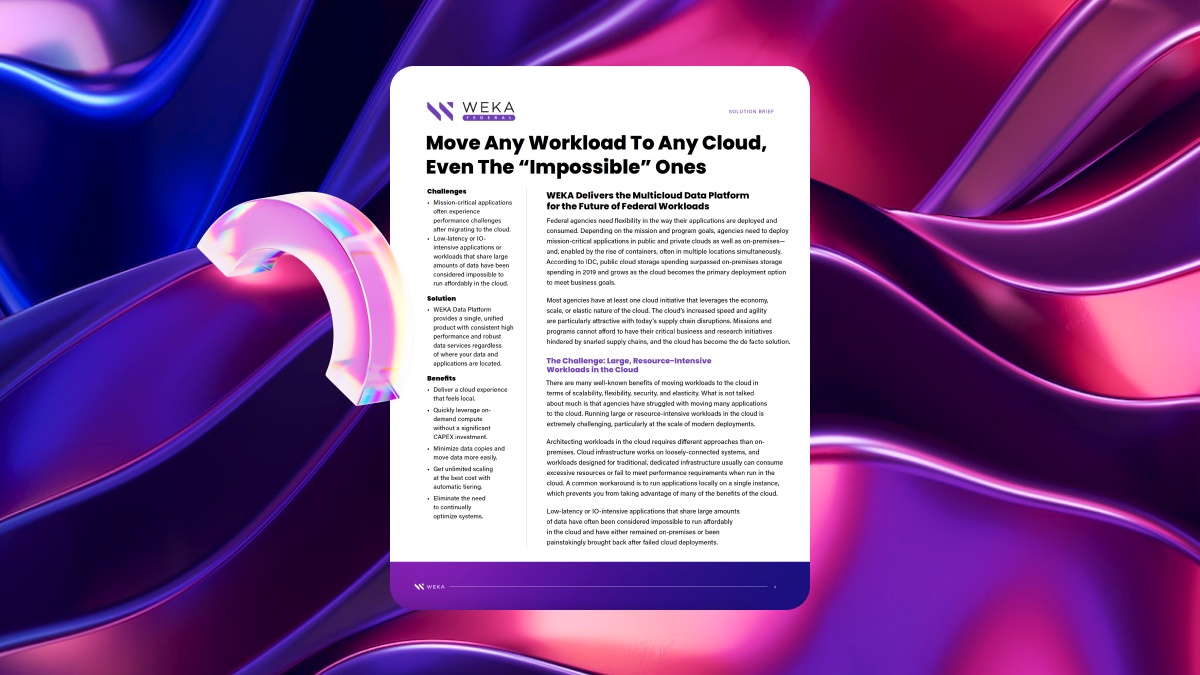Multi Cloud vs Hybrid Cloud: Understanding the Differences

Cloud computing is ubiquitous nowadays, but which solution is best for your company? We compare multi cloud and hybrid cloud and discuss their pros and cons.
What is the difference between hybrid cloud and multi cloud? Multi and hybrid cloud both refer to cloud deployments that integrate more than one cloud. A hybrid cloud infrastructure blends private and public clouds, while multi cloud blends different clouds of the same type, usually from different vendors.
What Is a Cloud Environment?
The “cloud” is a collection of distributed storage and processing resources working in tandem as a singular entity. With cloud systems, companies can launch complex, high-performance computational systems and shared software that is incredibly accessible and capable of accomplishing tasks that typical computers cannot.
Generally speaking, cloud computing systems break down into three types of environments:
- Public Cloud: The most common cloud system, public cloud infrastructure, is shared between customers. That is to say, these customers will have their own resource instances separated from other customers, but these will be housed on hardware infrastructure shared by those customers. Public systems are relatively the cheapest of all environments and scale extremely well.
- Private Cloud: Private cloud systems are those where a single customer enjoys access to all hardware and software resources. Traditionally, these systems were primarily on-prem, but some vendors offer private cloud systems. The private cloud is expensive and harder to scale but gives customers much more control and security.
- Hybrid Cloud: As the name suggests, hybrid cloud systems combine access to public and private cloud infrastructure to provide flexibility for users. The most common configuration for these hybrid systems involves using the public cloud for common tasks and data, moving mission-critical or regulated data to private cloud, and then scaling public resources when additional processing power is needed (a process known as “cloud bursting”).
Between these different cloud setups, enterprises can utilize the resources they need based on their specific business and technical needs.
What Is Multi Cloud Infrastructure?
Multi cloud refers to the use of cloud services from multiple public cloud providers. When an organization incorporates services from different public cloud providers in a cohesive system, they are using a multi cloud deployment. Many organizations develop comprehensive plans to utilize infrastructure from multiple cloud providers in order to increase flexibility, or mitigate concerns around costs and vendor lock-in; this is referred to as a multi cloud strategy.
Difference Between Multi Cloud and Hybrid Cloud?
At face value, a multi cloud system sounds very similar to a hybrid cloud system, but these cloud setups are far from identical.
While this isn’t accurate 100% of the time, it’s primarily the case that private clouds mix public and private resources while multi cloud blends different types of public clouds.
Hybrid and multi cloud infrastructures differ in a few key areas:
Composition
Hybrid cloud environments are built from a combination of private cloud (or an on-premises data center) and a public cloud environment. A multi cloud infrastructure is built using infrastructure and services from two different public cloud providers. This means a multi cloud environment can include a combination of different setups, configurations, and even companies to serve different needs
Multi cloud systems often involve multiple public cloud environments, whereas a hybrid cloud will include public and private infrastructure from either a single provider, or multiple providers.
What Are the Benefits of a Multi Cloud Infrastructure?
As organizations grow to need multi cloud systems, they intend to spread their operations across a distributed and diverse set of platforms and apps. This comes with a few clear benefits:
- Reduced Costs: As mentioned, with the right configuration and a focus on public cloud infrastructure, multi cloud environment can result in reduced costs as compared to a hybrid cloud that relies on private cloud environments
- Vendor Flexibility: Multi cloud systems don’t rely on a set of resources from a single provider. That means you can use available storage from one provider, high-performance computing from another, apps from another, etc. This provides significant flexibility and avoids problems associated with vendor lock-in.
- Redundancy and Resilience: Multi cloud environments enabled organizations to maintain data and applications in separate, distinct clouds. They can also backup data and applications from one cloud to another. If there is an outage in one cloud, the organization will be able to serve users from the alternative clouds they use
What Are the Benefits of Hybrid Cloud?
A multi cloud system is not an all-purpose solution. In many cases, hybrid cloud environments will better serve enterprise users:
- Scalability: Hybrid cloud systems include public cloud components specifically to scale. Since computational resources are all tied together, it’s much easier for users to burst into resources when needed without coordinating layers of cloud environments.
- Agility: Since hybrid resources are tied together, it’s also much easier to quickly adapt the system to more specific demands and respond to changes in operations or technology. The benefits of having a single vendor mean that changes are universal and only require one point of contact.
- Security: Data privacy, security, and industry compliance are already tough to manage across different apps, and these challenges are only amplified when spread across multiple vendors and environments. A hybrid system can automate and streamline compliance and security more efficiently, with a focus on the comprehensive management of data flows and systems.
Support Your High-Performance Cloud Solution with WEKA
It takes significant preparation and tools to manage hybrid and multi cloud systems for HPC cloud environments. Coordinating processing, storage, and security across multiple platforms or vendors is already challenging, so large enterprises and research organizations must deploy a cloud system to support either environment as needed
With WEKA, you get the following features:
- High-performance data platform that supports every every major public cloud provider (AWS, Azure, Google Cloud, and Oracle Cloud).
- Industry-best GPUDirect performance (113 Gbps for a single DGX-2 and 162 Gbps for a single DGX A100)
- In-flight and at-rest encryption for governance, risk, and compliance requirements
- Flexible, single-software data platform that supports every deployment model for edge, core, hybrid, and multi cloud environments
- Scalability up to exabytes of storage across billions of files
Contact our team today to learn more about WEKA hybrid cloud and multi cloud support.





